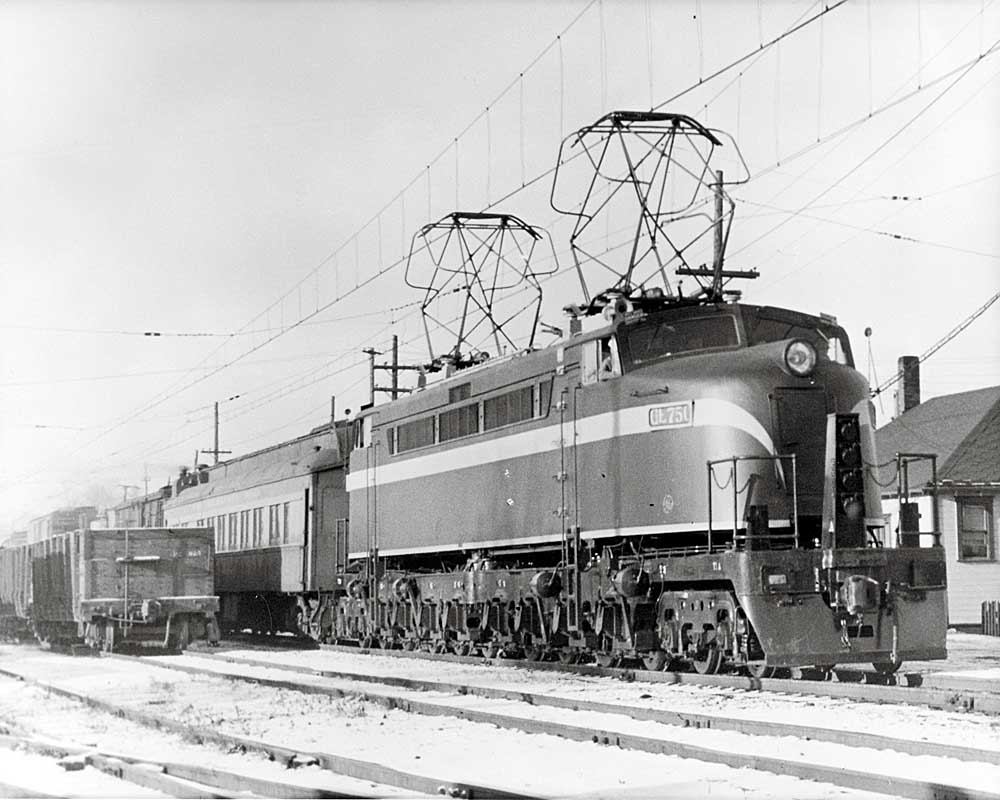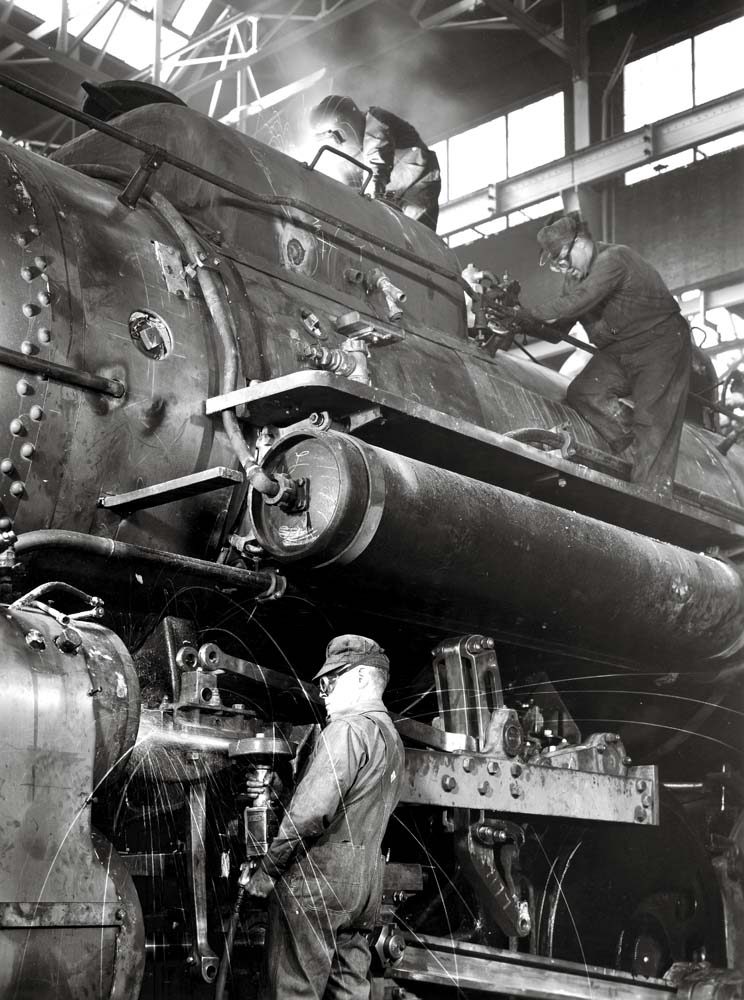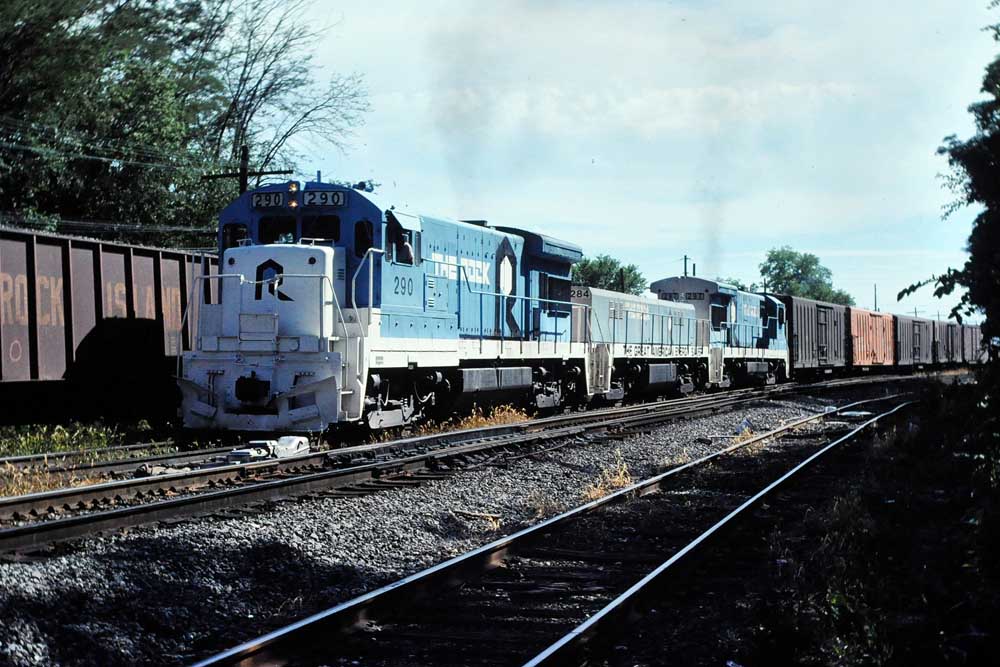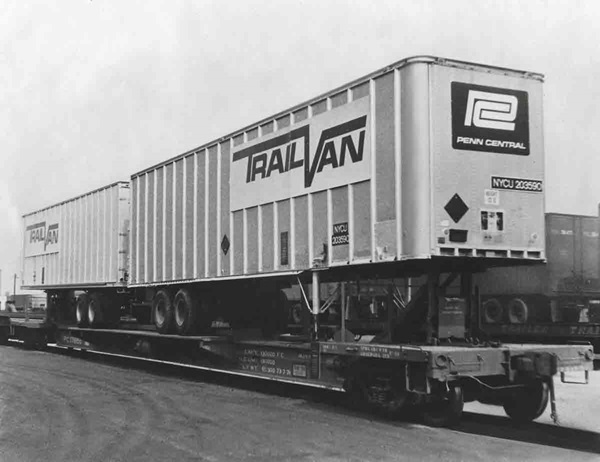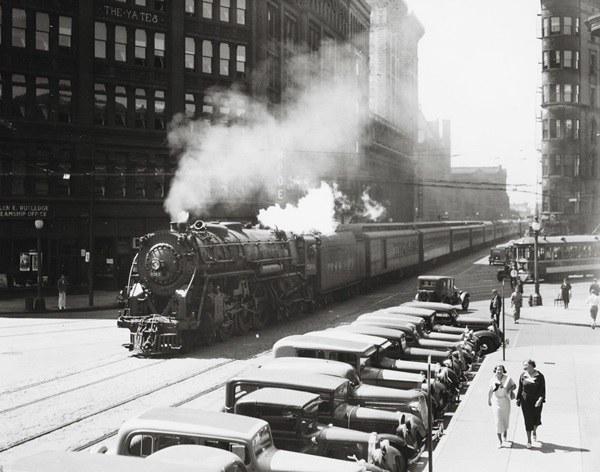
In 1928 I was a freshman at Syracuse University. I needed a part-time job, and got one with American Railway Express, Inc., which became Railway Express Agency the following year. I worked at the New York Central’s Syracuse depot on the night shift Friday, Saturday, and Sunday evenings from 5 p.m. until 1 a.m., whenever one of their regulars wanted a night off. On most weekends I worked at least two nights, and often all three.
At that time, NYC’s main passenger tracks ran through downtown Syracuse in the middle of Washington Street. One block west of the station, the tracks crossed Salina Street, a major north-south artery in the city’s main business section. Every time a passenger train came through, all traffic including autos, trolley cars, and pedestrians came to a halt for the duration of the train’s station stop. (The street-running ended in 1936 when a new station opened on a different, elevated track alignment.)
The highlight of each shift was the arrival, change of engines, and departure of the westbound 20th Century Limited, beginning a little before 9 p.m. I say “beginning,” because the Century usually ran in multiple sections. There was a strict ritual that took place during the time these trains were in the terminal.
First of all, a shiny black J-1 Hudson locomotive appeared from the east and moved to a point at the west end of the station, where there was a crossover. When that engine appeared, all activity stopped. No express carts were allowed on the platform, and there was just one lone baggage cart with a few suitcases for those passengers who were to board for Chicago. Our gang used this time to drink our Thermos of coffee and eat our sandwich. But not me. My railroad interest would not let me just sit down and wait. I took off for the west end of the platform for the ceremony of changing engines on the limited.
At the same time the locomotive appeared, two car-knockers took their positions at a mark in the platform pavement, one on each side of the track. Four other carmen spaced themselves at intervals back up the track, two on each side. This all took place in 2 or 3 minutes, then everything stopped for another 3 minutes or so . . . and then the 20th Century, First Section, came grandly down the street and into the station, stopping with the rear of the locomotive right where the first two carmen were waiting.
The two men stepped in between the tender and the first car, uncoupled the steam lines, and lifted the coupler pin. With a wave to the engineer, the Hudson eased away from the train and went down the tracks to a spot beyond the crossover. Then the waiting engine moved through the crossover onto the westbound track and backed down to the train. The engineers were the best. The instant that pin dropped, securing the coupler knuckle in place, the engine stopped. There was no bump for the passengers on the Century.
As the engines were being exchanged, the four other car-knockers went the length of the train, feeling each wheel bearing for heat and trying a valve on both the air and the steam on each car on the train. Just as they finished, the conductor signaled and the Century pulled out. The whole operation took maybe 5 minutes. Then, almost before the first section was out of sight, the entire process was put into effect for the second section. For the two years that I was there, I never saw a time when the operation did not go off like clockwork.
There were always at least two sections; on Fridays there might be four or five. Minutes after the last section left the platform end, we were all back in business sorting express. The entire operation is still fresh in my mind, and I can close my eyes and see those magnificent Hudsons come charging into that station platform area and stopping without a bump or a jerk.
After the stock market crash in October 1929, business declined rapidly. When I returned to college in 1930, express shipments had declined so much that not only did Railway Express need no extra help, it was forced to furlough regular men as well.
First published in Spring 2013 Classic Trains






